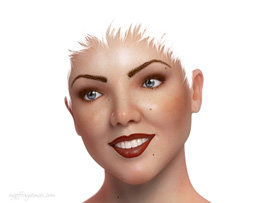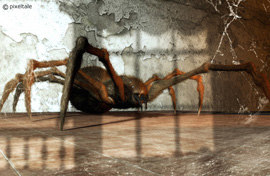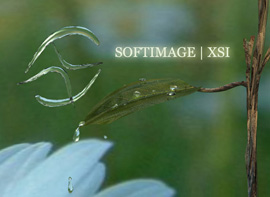 Softimage, the Montreal 3D animation dynamo, is celebrating is 20th year at the perfect time. Montreal is hosting an international video game summit and a game festival, both of which will feature games made with its cutting-edge software.
Softimage, the Montreal 3D animation dynamo, is celebrating is 20th year at the perfect time. Montreal is hosting an international video game summit and a game festival, both of which will feature games made with its cutting-edge software.
Yet the company, beloved by movie studios and largely credited with helping Montreal become the video game hub it is, is a second favourite for 3D artist in game studios.
The company is banking that the video game boom, powered by the new generation of consoles, will give its new products the edge it needs in its third decade of life.
 “If you look at where we started and where we are now, it’s been amazing,” said Marc Stevens, general manager of Softimage, a unit of Avid Technologies. “But there’s a lot to improve on.”
“If you look at where we started and where we are now, it’s been amazing,” said Marc Stevens, general manager of Softimage, a unit of Avid Technologies. “But there’s a lot to improve on.”
Softimage’s place in the game industry has been one of irony.
The company kick-started the 3D animation craze in the ’90s by offering a tool to give game characters smoother, more realistic movements.
They were already pioneers in movie animation, having made a simple-to-use program for artists that did away with the army of geeks needed to crunch the data and write the code.
It was the company that brought attention to Montreal as a hotbed of digital innovations and lured video game talent here. Many of its employees also joined budding game studios in town.
Yet in terms of market share it has always been a distant second to Autodesk Inc. The 3D Studio Max software made by the San Rafael, Calif.-based company is the runaway favourite of video game studios.
Softimage is trying to level the playing field by empowering not just the animation artists with new tools, but also gamers themselves – especially hardcore gamers who dabble in game design and who may one day work at game studios.
 The company has recently released free “modding” tools, or software for amateur programmers to create their own modifications (mods) for popular games. The move was well-received by fans of Half-Life 2, a first-person shooter that allows mod makers to create and animate their own characters for the game.
The company has recently released free “modding” tools, or software for amateur programmers to create their own modifications (mods) for popular games. The move was well-received by fans of Half-Life 2, a first-person shooter that allows mod makers to create and animate their own characters for the game.
Stevens also italicized the “cheap” version of the flagship animation program, XSI, which at $500 U.S. offers the little animator many of the functions in the professional $7,000 U.S. build.
“Cost is a big barrier to the small guys who don’t have big development teams,” Stevens said. “But in the end, it comes down to simplicity, to tools that are easy to use.”
But Softimage’s most powerful weapon to win over game studios may be Face Robot, its brand new tool for realistic animation of faces, by far the toughest animating job there is.
 Made with the help of anatomy specialists, Face Robot embeds an invisible muscular system in the face of the 3D models that give it human-like movements: if a model’s nose is scrunched, the brows wrinkle accordingly.
Made with the help of anatomy specialists, Face Robot embeds an invisible muscular system in the face of the 3D models that give it human-like movements: if a model’s nose is scrunched, the brows wrinkle accordingly.
“We really asked ourselves, where can we make an impact on the industry and raise the level of animation,” Stevens recalled. “Face animation is a hard problem without a lot of solutions.”
According to a research firm, the outlook for 3D animation is bright.
“Almost all games today are in 3D and most studios have more than one person working in 3D animation,” Michael Arrington, a senior analyst at Acacia Research Group said.
 Though he could not offer any more details – the small number of 3D tool makers is too small to merit extensive research – Arrington said there is always room for two in the marketplace.
Though he could not offer any more details – the small number of 3D tool makers is too small to merit extensive research – Arrington said there is always room for two in the marketplace.
“The nice thing about the game industry is that developers aren’t opposed to using more than one brand. They know that each one has its own strengths.”
